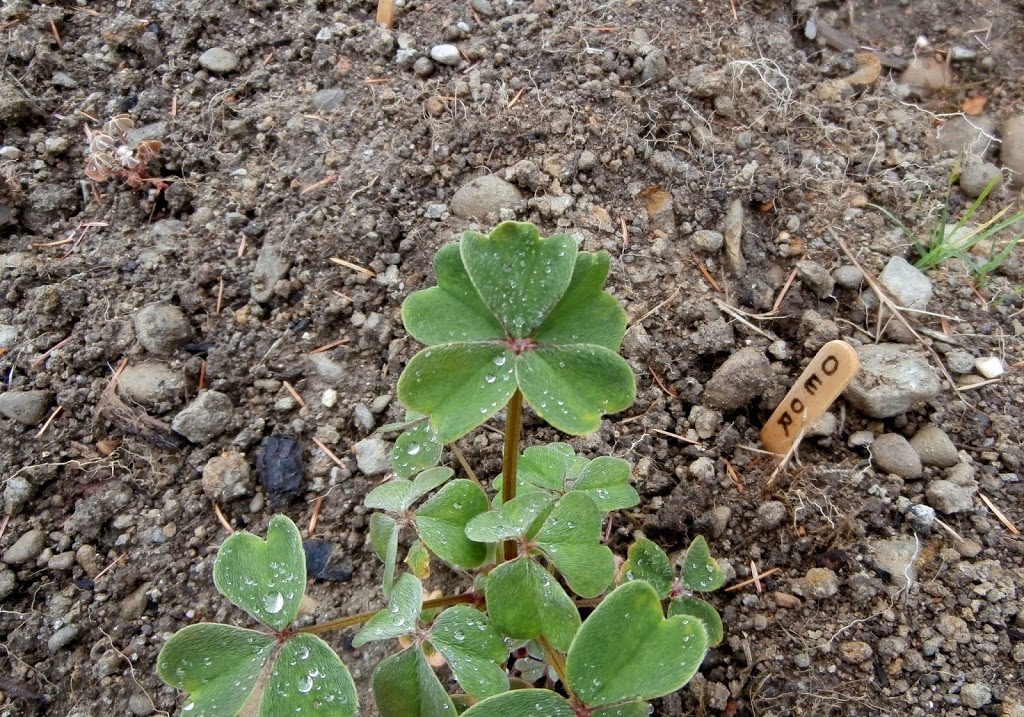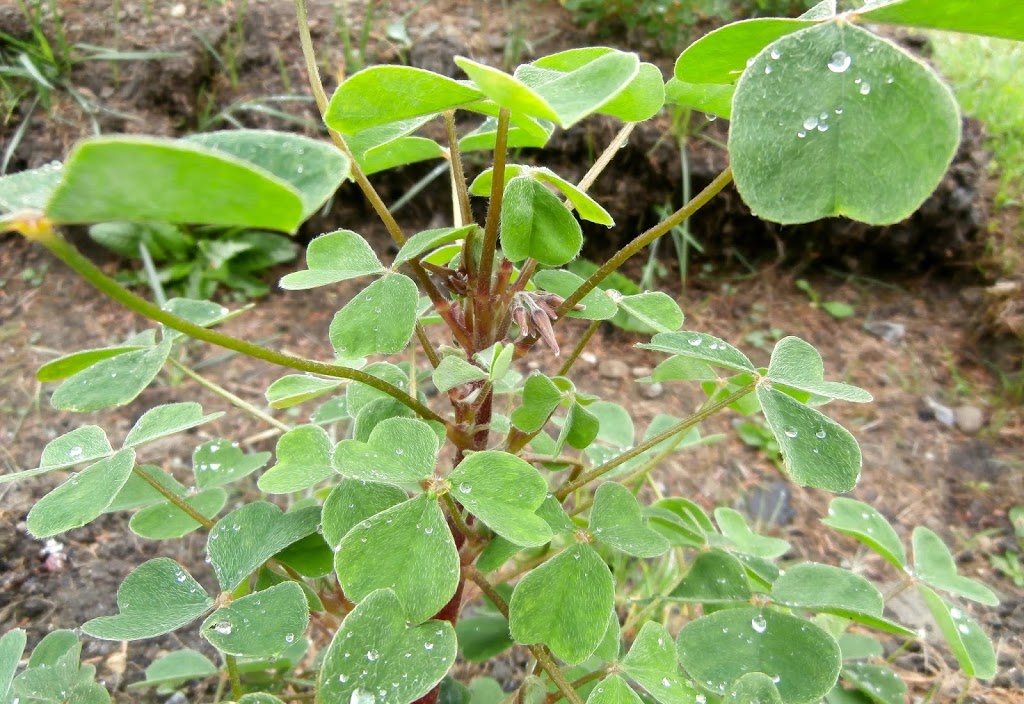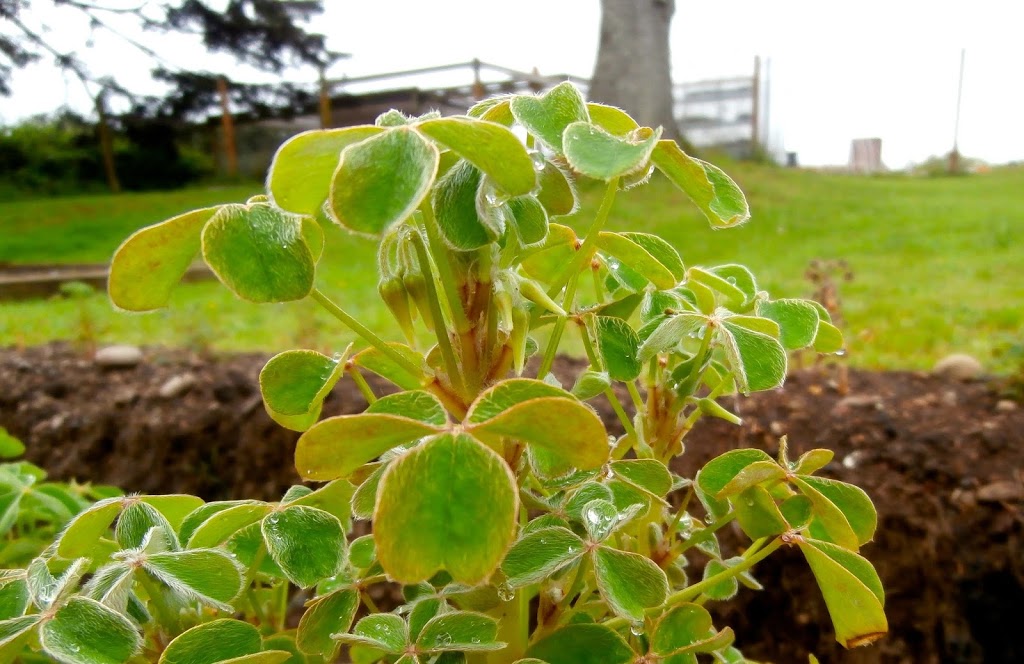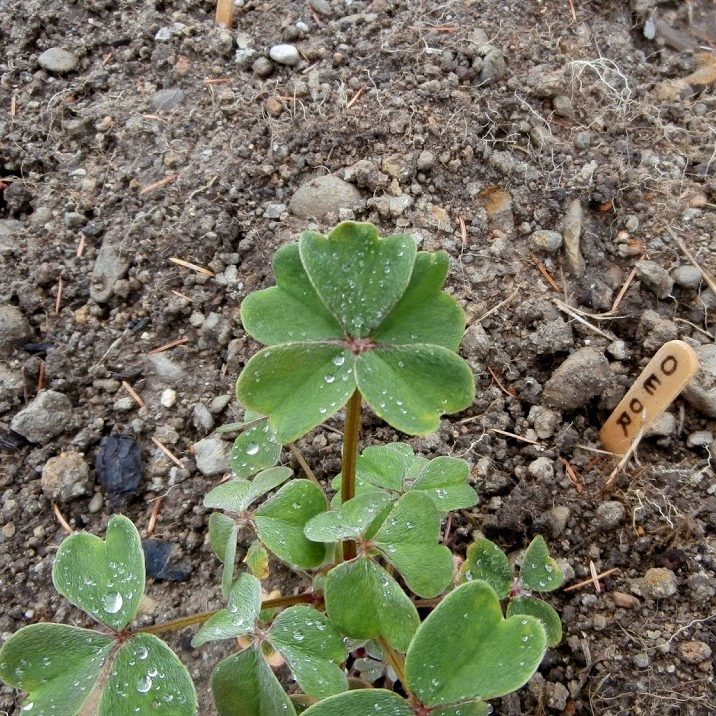Blog, breeding, oca (Oxalis tuberosa)
Oca: A budding interest soon to bear fruit?
 |
| Five-leafed oca |
While performing my morning walk through the oca (Oxalis tuberosa) and potato rows, vigilant for signs of pests and disease while blinking the sleep from my eyes, I spotted an unusual oca leaf that tuned my senses. Is a five-leafed oca as lucky as a four-leafed clover? While I haven’t studied the matter rigorously, based on follow-on events, I suspect that the answer is yes. While searching for more unusual oca features, I spotted something unexpected at this time of year: flower buds. Oca tends to flower fairly late in the season for most people. June is pretty early, although not unheard of.
 |
| Flower buds on Bolivian Red oca plant |
I don’t yet know the flower forms of any of the plants that I am growing, but the best case scenario with a single plant is that it has a mid-styled flower which has a low probability of self-pollination. Ideally, I would hope to find multiple plants of different varieties flowering at the same time and to further discover that those varieties bear different flower types. With my morning auto-pilot turned off, I took another, more attentive, wander through the oca beds and was delighted to find buds on a second plant.
 |
| Flower buds on Sunset oca plant |
As a side note, neither one of these oca plants is in my seed bed, which is good for a laugh. These plants are in the neglected rows where we planted all the “extra” oca of common varieties, rather than the carefully plotted and managed oca resort, where I let the plants lounge in comfort while I feed them grapes.
Update: A more careful examination later in the day revealed two more plants with buds. I also started to notice projections from the leaf axils and realized that a lot of plants are in the process of budding. It amounts to several dozen plants of the Hopin and Sunset varieties, so there is going to be a lot of oca flowering in our near future.
Oca seeds and tubers are sometimes available in our seed shop.

